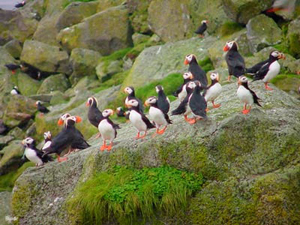| Error processing SSI file |
||
| Error processing SSI file |
||
| Error processing SSI file |
||
Error processing SSI file |
About Marine Protected Areas
Alaska Maritime National Wildlife Refuge
Alaska Maritime National Wildlife Refuge The sheer span on Alaska Maritime National Wildlife Refuge is difficult to grasp. It ranges across most of the 47,300 miles of Alaska's coastline and includes 2,500 islands, islets, spires, rocks, reefs, waters and headlands. No other maritime National Wildlife Refuge in the United States is as large or as productive. This extensive refuge provides nesting habitat for approximately 40 million seabirds, which is almost 80% of Alaska's nesting seabird population. This refuge happens to also be one of the most remote units of the National Wildlife Refuge System, making management a challenge. Most of the activities conducted here involve long-term ecosystem monitoring, marine resource research and invasive species management. These activities are very important, especially invasive species management. Introduced foxes and shipwrecked rats have had catastrophic impacts on seabird populations, intertidal diversity, and archeological remains. Foxes alone have been removed from more than one million acres, on over 40 different islands to date. The successful delisting of the endemic Aleutian Canada Goose as an endangered species in 2000 is due to this effort. Rats are a different story, as they post a greater threat to island ecosystems than an oil spill can. Without action to prevent them, rats remain forever. When ships wreck on a remote refuge island, a "rat spill" response team is assembled to prevent a rat introduction. No act undertaken is too big or too small to save even one of the 40 million birds in the Alaska Maritime National Wildlife Refuge. Did you know?
Learn more/get involved:
|
|
